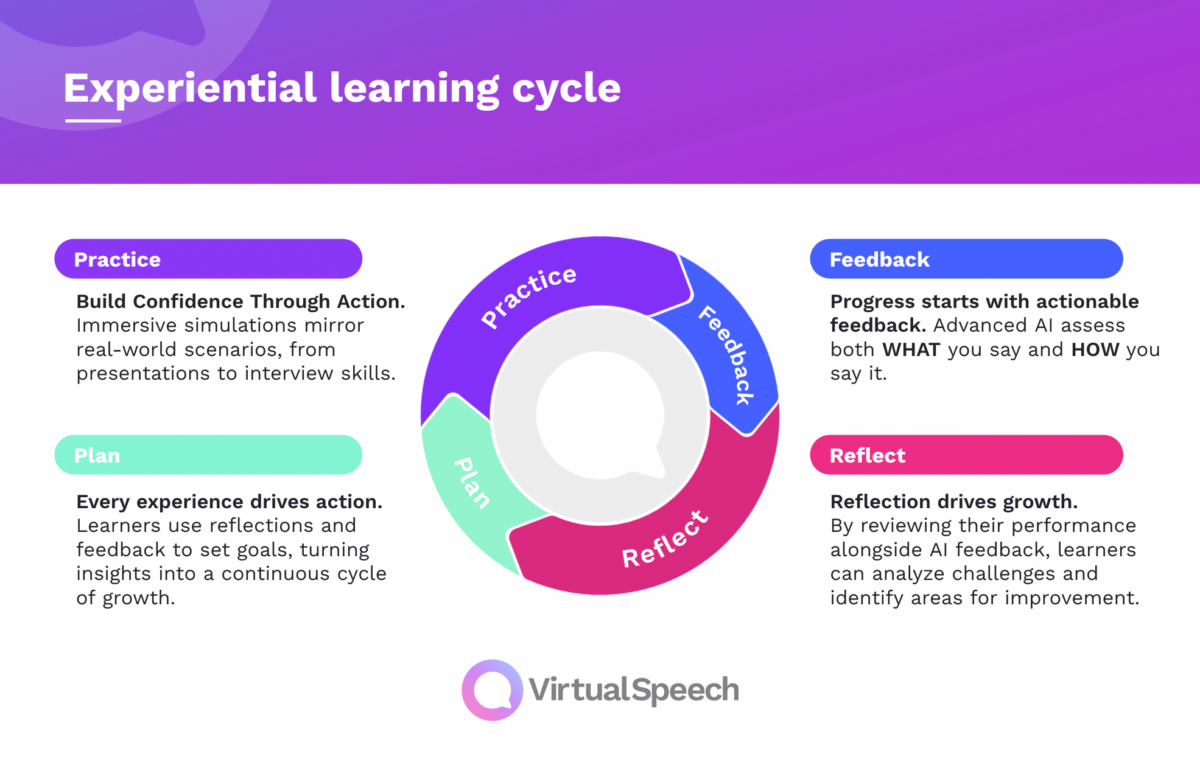Many businesses assume new hires will “learn on the job,” but this approach often results in stress, disengagement, and high turnover. With the constant pressures of day-to-day operations, onboarding is frequently overlooked or rushed. According to SHRM, 69% of employees are more likely to stay for three years if they experience great onboarding—yet 3% of new hires leave before their first anniversary (Build Empire).
Without a structured onboarding process, businesses risk missing an opportunity to set up new hires for success. A well-planned training program enhances engagement, retention, and productivity.
This guide will help you create an effective onboarding and training strategy, including best practices for training remote employees.
Before They Start: Setting Up for Succes
Preboarding: The Warm Welcome
The onboarding experience starts before day one. A well-structured preboarding process helps new hires feel prepared, valued, and excited to join your team.
Send a Welcome Pack
Help new hires start strong from day one by providing key details like their schedule, dress code, parking information, and a first-day agenda in advance. What feels routine to existing employees can be a source of stress for newcomers, so giving them this information in advance helps ease nerves and uncertainty. A personal welcome message from their manager or CEO can also make a great first impression.
If you really want to go above and beyond, consider sending a Swag Box—this could include items like a branded mug or water bottle, to more personalized items that reflect your company’s values.
Assign a Mentor/Buddy
Give new hires a dedicated go-to person who can answer questions, offer guidance, and help them navigate company culture. A mentor provides crucial support from day one, making it easier for new employees to settle in and feel confident knowing they have someone to turn to.
Schedule a Team Introduction
Make time for a proper welcome rather than a quick hello over a computer monitor between emails. A casual coffee chat, a welcome lunch, or a structured round of introductions (away from daily tasks) helps new hires build connections and feel like part of the team from the start.

Deliver Well-Planned, Relevant Training
Customize Training Content
One-size-fits-all training doesn’t work. Tailor sessions to the new hire’s role so they receive the most relevant knowledge and skills to succeed. The first days in a new role can be overwhelming, so focusing on essential, role-specific information helps keep training engaging and manageable.
Assess Skill Levels
Avoid redundant training by assessing each new hire’s prior experience. This helps focus time where it’s needed most, identifying key areas for growth, development, and potential skill gaps. A targeted approach makes training more efficient while ensuring new employees feel valued and understood.
Prepare Materials & Workspace
Set employees up for success by ensuring all tools, resources, and schedules are in place before they start. A well-prepared environment leads to a smoother onboarding experience.
Don’t forget digital essentials—ensure new hires have login credentials and access to key software like Slack or project management tools from day one.
The First Days: Provide an Engaging Onboarding
Welcome & Orientation
The first few days are crucial in shaping a new hire’s experience. Start with a structured onboarding session that covers company values, culture, and long-term vision. This helps employees understand their role in the bigger picture and feel aligned with the organization’s mission.
Provide a Clear Overview
Ensure new employees have all relevant materials, including their schedule, key policies, and an introduction to their role. Rather than overwhelming them with too much information at once, introduce key responsibilities gradually through structured training sessions.
Send a Welcome Email
Announce new hires to the team with a warm welcome email. This should introduce them by name, share their role, and provide a fun fact or two to encourage team engagement. This gives existing employees awareness, as well potential talking points to engage.
Workspace Tour
Help new employees feel comfortable in their new environment by giving them a tour of the office (or virtual workspace). Cover essential areas such as break rooms, toilets, meeting spaces, emergency exits, and any must-know locations like supply closets or coffee stations.
If remote, provide a virtual walkthrough of important digital tools and communication channels.
Building Connections
Encourage Team Integration
New employees should feel like part of the team from day one. Organizing informal meetups, such as welcome lunches or coffee chats, fosters relationship-building in a relaxed environment—free from the pressures of trying to connect between tasks at their desk. If onboarding multiple employees, icebreaker activities can also help ease first-day nerves and create a supportive atmosphere as they settle into the team.
Introduce the Team Thoughtfully
Instead of a brief “this is Hugh” introduction over a computer screen, set aside dedicated time for more meaningful introductions. Encourage team members to share their roles, responsibilities, and how they collaborate.
This helps new hires understand the company structure and workflow while making them feel valued and part of the team. A little extra time and attention here can go a long way in helping new employees feel connected.

Provide a Company Directory
In smaller companies, new hires will likely meet everyone within their first few weeks. But in larger organizations, this isn’t always the case. Make networking easier by providing a company directory that includes names, roles, and even fun facts about employees. This will help new hires put faces to names and give them a handy reference point when reaching out for support.
Setting Expectations & Supporting Growth
Set Realistic Goals
Establish achievable short-term goals tailored to the new hire’s experience level. This helps build confidence and ensures steady progress without overwhelming them. Also, consider discussing both short and long-term goals to align their aspirations with the role, providing a clear sense of direction.
Encourage Practical Application
Hands-on experience is one of the most effective ways to reinforce learning. Allow new employees to apply their training in real scenarios shortly after learning it. This helps them build both confidence and competence quickly. Research shows that knowledge retention can improve by as much as 70% with experiential learning, helping new hires feel more confident, faster.
Provide Timely Feedback
Feedback should be constructive and delivered early to prevent mistakes from becoming habits. A supportive approach, such as sharing personal experiences or offering alternative methods, encourages growth while maintaining confidence.
Schedule regular one-on-ones during their early days to ensure consistent feedback, transitioning into more formal reviews as they settle into the role.
Personalize Learning
Everyone learns differently. Offer a variety of training methods—such as online modules, hands-on exercises, and peer mentoring—to cater to different learning styles and keep the process engaging. Check-in with the new hire to understand their preferred learning style and tailor support accordingly to help them develop effectively.
By creating a well-structured, engaging onboarding experience, new hires will feel confident, supported, and ready to contribute from day one.
Training that Works: Modern Learning Approaches
Hands-on Learning & On-the-Job Training
Assign real tasks early to reinforce learning and help new hires gain immediate, practical experience. According to McCall, Lombardo, and Eichinger’s (1996) 70-20-10 model, 70% of learning comes from job-related experience. On-the-job training offers an excellent way to achieve this, allowing employees to make decisions, problem-solve, and apply skills in real scenarios.
While experiential learning is highly effective, some employees may feel overwhelmed by making mistakes in real-world settings. To address this, immersive training methods—such as VR—offer a safe environment to practice, with studies showing that VR-based learning can improve retention by 75% and a 40% increase in confidence when compared to traditional classroom methods.
Interactive & Immersive Training
Interactive training enhances traditional classroom-style methods by incorporating group activities, role-playing, quizzes, and discussions. This makes learning more engaging but can be challenging for quieter employees, who may experience anxiety and struggle with retention. To ensure inclusivity, it’s important to balance interactive elements with support, allowing all participants to contribute comfortably.
VR provides a powerful solution for immersive training, enabling employees to experience realistic scenarios—such as customer service interactions or safety drills—in a controlled environment. Research shows that employees typically forget 70% of what they learn through traditional training within a day and around 90% within a month.
In contrast, VR training can boost retention rates to as much as 80% even after a year. By allowing users to practice skills, make mistakes safely, and refine their approach without real-world consequences, VR is particularly effective for high-stakes tasks where errors could be costly.
At VirtualSpeech, we specialize in immersive soft skills training across VR, AR, and web-based platforms. Our award-winning solutions focus on communication skills such as public speaking, sales, and leadership. Trusted by universities and Fortune 500 companies worldwide – including RTC Antwerpen and Vodafone—VirtualSpeech has helped over 550,000 learners across 125+ countries develop their skills.
Digital, Self-Paced & Experiential Training
Online training is a versatile and flexible approach that accommodates a variety of learning preferences. Offering online courses, gamified training, and AI-driven simulations allows employees to learn at their own pace, anytime and anywhere. Gamification enhances engagement by incorporating points, rewards, and a sense of achievement, making learning more interactive and motivating.
Blending digital training with microlearning (short, focused lessons) can further improve learning outcomes, especially for busy employees who need to fit training into their daily schedules. However, digital learning is most effective when paired with experiential training—a hands-on approach where employees actively apply what they’ve learned in real-world or simulated scenarios.
Experiential learning is based on the principle that people learn best by doing. Instead of passively absorbing information, employees engage in realistic, practical experiences that reinforce their skills. This method not only improves retention but also helps learners build confidence in applying their skills.
Research has further shown that practicing in VR can make employees up to 275% more confident in real-world situations, highlighting the power of immersive, experience-driven training.

Best Practices for Training Remote Employees
In today’s work environment, remote and hybrid setups have become the norm. However, while many organizations quickly adapted to these models, not all have updated their onboarding processes to match. Some employers hold concerns about remote work, including:
- Technical difficulties (unstable internet, software issues)
- Distractions at home
- Lack of face-to-face supervision
- Feelings of isolation
While these challenges can arise, they’re not exclusive to remote work—office-based employees can face similar issues. In fact, remote and hybrid employees generally report 20% higher overall happiness compared to their office-based counterparts, along with a potential 35-40% boost in productivity.
To set remote and hybrid employees up for success, structured and engaging onboarding is essential. It may even be more critical than in-office onboarding, as remote workers miss out on natural bonding moments—like casual coffee-break conversations—that help build strong team connections.
Choose the Right Delivery Method
Remote training can take different forms, and selecting the right approach is crucial:
Asynchronous Learning
This flexible approach allows employees to access training materials, complete assessments, and engage with content at their own pace. Progress is typically tracked through course completion scores or status updates within a set deadline.
Synchronous Learning
In this real-time format, all employees participate in training sessions simultaneously. Since these sessions happen at a fixed time, careful planning is required to ensure everyone can attend virtually.
Blended Learning
A customized training solution that combines elements of both synchronous and asynchronous learning, offering the structure of live sessions with the flexibility of self-paced content to suit your company’s needs.
Adult Learning Considerations
Unlike children, adults are not in a traditional school setting and require different motivations to learn. They learn best when training is relevant, practical, and respects their prior experience. Effective remote training should incorporate real-world applications, problem-solving exercises, and opportunities for self-directed learning.
Adults are more engaged when they see the immediate value of training and have control over their learning paths. Providing opportunities to apply new knowledge right away enhances retention and fosters long-term skill development.

Invest in the Right Tools & Resources
A successful remote training program requires a well-rounded set of tools to facilitate smooth execution, engagement, and progress tracking. Here’s a breakdown of the essential tools needed:
Learning Management Systems (LMS)
An LMS is essential for organizing, delivering, and tracking the progress of remote training. It serves as the central hub for all training content, enabling administrators to assign courses, track learner progress, and generate reports. With an LMS, you can easily ensure employees are meeting milestones and deadlines, providing them with resources, quizzes, and assessments. This tool helps keep learners engaged and allows for streamlined management of a remote training program.
Project Management & Communication Platforms
Platforms like Slack, Trello, or Asana are vital for fostering collaboration, tracking tasks, and keeping remote employees connected. These tools allow team members to communicate easily, share updates, and collaborate on projects, ensuring that remote workers are never isolated.
Additionally, using these platforms for task management ensures that training milestones and deadlines are met. Clear communication is key to maintaining a productive remote workforce, and these tools help bridge the gap created by the lack of physical presence.
Conferencing Software
Conferencing software such as Zoom or Webex plays a crucial role in live, synchronous training sessions. Whether it’s virtual workshops, webinars, or one-on-one coaching, these tools provide face-to-face interaction, which is vital for keeping remote employees engaged.
They allow trainers to present materials, answer questions in real-time, and encourage group discussions. Virtual meetings also allow employees to feel more connected to their team and the company culture, which is particularly important in remote or hybrid setups.
Each of these tools is critical for building a comprehensive remote training program that is engaging, interactive, and effective. By using the right combination of resources, employers can ensure that their remote employees have the support they need to succeed.
Set Clear Expectations
Clear expectations are the foundation of any successful remote training program. By setting defined goals and ensuring all participants understand what is expected of them, you help employees stay focused and motivated throughout their learning journey. Here’s how to set those expectations effectively:
Define Training Goals and Learning Outcomes Upfront
It’s essential to clarify the objectives of the training program right from the start. Clearly defined goals help employees understand why they are engaging in the training, what they should expect to achieve, and how their success will be measured. Outline both the short-term and long-term learning outcomes, ensuring employees know what skills they will acquire and how those skills apply to their roles. These clear goals act as a roadmap, helping participants stay on track and motivated throughout the process.
Prepare Materials, Checklists, and Assessments in Advance
To make the training process as smooth as possible, it’s vital to prepare all materials, checklists, and assessments before the training begins. Having everything ready to go ensures there are no delays or confusion when it’s time to start. Organize the training modules, presentations, reading materials, and any supplementary resources in an accessible format.
If assessments or quizzes are included, ensure they are aligned with the learning objectives. Checklists also help guide employees through each phase of the training, so they know what they need to do and when, and give them a sense of progression as they tick elements off.
Ensure IT Support is Available to Troubleshoot Technical Issues
Remote training is dependent on technology, and technical issues can disrupt the learning process. To minimize disruptions, it’s crucial to have reliable IT support available to troubleshoot any problems that arise. A quick resolution of technical difficulties prevents frustration and ensures the training session runs smoothly. Consider providing clear instructions for troubleshooting common issues and offering an easily accessible helpdesk or support team.

Conduct an Orientation
Before diving into formal training, it’s important to set the stage by conducting an orientation. This allows employees to familiarize themselves with the tools and platform they’ll be using, understand the expectations for participation, and provide the opportunity to ask any immediate questions before starting the training. A well-structured orientation ensures a smoother and more productive training experience. Here’s how to conduct an effective orientation:
Introduce Employees to the Platform and Software
Training platforms and software are essential for remote learning, but they can be daunting if employees aren’t familiar with them. Before the formal training starts, take time to walk employees through the platform or software they’ll be using. Show them where to find course materials, how to navigate the system, and how to access important resources.
Demonstrating features like how to submit assignments, participate in discussions, or view video tutorials—ensures that employees feel comfortable using the tools, reducing potential frustration later on. If possible, provide resources like user guides or tutorial videos for further reference.
Clarify Training Expectations and Communication Guidelines
Make sure employees understand how the training will be conducted, including the schedule, expectations, and modes of communication. For example, if there are specific times for group activities, lectures, or discussions, let employees know in advance.
This will help them manage their time and stay organized. Additionally, clarify how communication will be handled during the training. Encourage open lines of communication and let employees know how to ask questions or express concerns.
Establish Ground Rules for Participation
To maintain order and ensure an engaging environment during remote training, it’s crucial to establish ground rules early on. Some guidelines might include:
- Mute microphones when not speaking
This helps prevent background noise and distractions, especially in larger group sessions. - Use the “raise hand” feature for questions
Encouraging employees to use this feature in virtual meetings helps manage the flow of conversation and ensures everyone has a chance to ask questions without interrupting. - Engage in discussions via chat or breakout rooms
Promote active participation by using chat for quick comments or questions and breakout rooms for smaller group discussions. This ensures employees are not passive listeners but active contributors in the learning process.
By conducting a comprehensive orientation, employees will feel more confident navigating the training environment, and they will understand how to engage effectively with the content and other participants. This upfront preparation creates a foundation for a successful training experience.
Boost Engagement with Gamification & Collaboration
To keep remote employees motivated and engaged, training should be interactive, rewarding, and social. Incorporating gamification and collaborative learning can significantly enhance participation, retention, and overall training effectiveness.
Gamification elements—such as leaderboards, challenges, and point-based incentives—make learning more dynamic and enjoyable. Organizations that implement gamified training see a 50% increase in productivity and a 60% boost in engagement (Build Empire). Additionally, certificates of completion provide employees with tangible recognition of their progress, reinforcing motivation and a sense of achievement.
Collaboration is equally important. Encouraging group discussions, breakout rooms, and team-based challenges fosters peer learning, enabling employees to share insights and develop problem-solving skills together. This interactive approach not only improves knowledge retention but also helps remote employees feel more connected to their team.

Continuous Support & Growth
Effective training doesn’t end after onboarding—it’s an ongoing process that supports employee development, reinforces company culture, and fosters long-term success. By providing continuous support, organizations can ensure employees feel empowered, engaged, and prepared for future growth.
Feedback and Performance Check-ins
Regular feedback is essential for helping employees refine their skills and stay on track. Real-time feedback reinforces good habits, helps course-correct early mistakes, and ensures employees feel supported in their learning journey.
Adopting a coaching approach to feedback—where constructive criticism is framed positively—can boost confidence and motivation. Instead of focusing solely on what went wrong, highlight progress, offer actionable improvements, and encourage employees to take ownership of their development.
Adapting to Individual Learning Styles
Not all employees learn the same way. Some may grasp concepts best through visual aids, while others prefer hands-on tasks or structured reading materials. Recognizing these differences and tailoring training accordingly leads to better engagement and retention.
A blended learning approach, combining various training methods (such as interactive eLearning, instructor-led sessions, and experiential learning), allows employees to absorb information in the way that suits them best, ensuring more effective skill development.
Culture and Long-Term Development
Training isn’t just about job-specific skills—it’s also an opportunity to integrate employees into the company’s culture. Instead of presenting values through static slides, bring them to life through real-world examples that showcase how they influence decision-making, teamwork, and leadership.
Additionally, offering cross-training opportunities allows employees to explore different roles, build new competencies, and expand their career paths. Providing access to mentorship, stretch assignments, and continuous learning resources fosters a culture of growth and long-term success for both employees and the organization.
By prioritizing continuous support and development, companies can ensure their employees stay engaged, adaptable, and equipped for future challenges.
Conclusion: Building a Strong Foundation for Success
Effective onboarding is more than just a checklist—it’s the foundation for an employee’s long-term success within a company. A well-structured onboarding process ensures that remote and hybrid employees feel supported, engaged, and equipped to thrive in their roles.
By leveraging interactive training methods, clear expectations, cutting-edge technology, and ongoing support, organizations can create an onboarding experience that fosters confidence, collaboration, and productivity. When employees feel valued and prepared, they are more likely to stay motivated, contribute meaningfully, and grow within the company.
As the workplace continues to evolve, investing in a dynamic, engaging, and inclusive onboarding process will set businesses—and their employees—up for long-term success.




